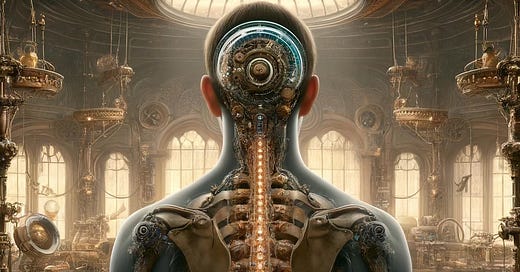This morning I was prompted to review section 86 of the Reality of Being, a collection of remarks about the first and second conscious shocks.
It's an interesting chapter, because it contains a detailed description of the work with sensation and the consequent opening for feeling. It describes it quite accurately, yet it does so exclusively in the jargon of the Gurdjieff system. I suppose that's fair enough; after all, the remarks are presented in that context from the beginning, and the Gurdjieff jargon is like a limpet – a shell that clings tightly to a rock at the tide and cannot be removed from it without excessive force.
Yet questions about it arise. First of all, to the critical eye it amounts to an explanation, presented within the context of a form; and yet Jeanne de Salzmann spends a good deal of time in other places in this collection of her notes remarking that we must rise above and surpass forms.
Secondly, folks in the Gurdjieff work are constantly warning one not to try and explain things. To keep the question open.
The very form we inhabit prevents us from seeing the contradictions in this. But never mind; I merely point it out because we are as full of contradictions in this work as everyone else is. We just don't think we are – and the illustration already shows us the way that we react in the mind. It underscores exactly what she is talking about in terms of the way the mind interferes with true work.
Do we really need the jargon? Spiritual work proceeded on this planet for probably five or 10,000 years before Gurdjieff came along with his “conscious shocks.” I haven't found evidence of his language and the remarks he makes in any other spiritual or religious practice; so somehow mankind staggered forward for hundreds of generations without it.
Is it really serving us here? I don't deny its originality, the premises it is based on, or even what’s presented here, because I know from personal experience that everything she says is accurate.
The question is whether it had to be said this way; and whether the artificial model – the technology—that describes it is truly necessary or relevant to ordinary practical work in life.
Do you really walk around asking yourself whether you are passing from mi to fa in a moment of ordinary life?
Do you actually run about thinking about conscious labor and intentional suffering while you’re walking around, and even in terms of what you are feeling now?
If you are, then I would submit to you that you don't have an ordinary life and you thus can’t be working in one. You’re working in a Gurdjieff work laboratory, a tiny research area sealed off from the real world so that the experiments can be conducted in isolation—
Which is per the premise of the form exactly the wrong place to conduct the experiments.
Keep reading with a 7-day free trial
Subscribe to Zen, Yoga, Gurdjieff: Lee's Gurdjieff Newsletter to keep reading this post and get 7 days of free access to the full post archives.





